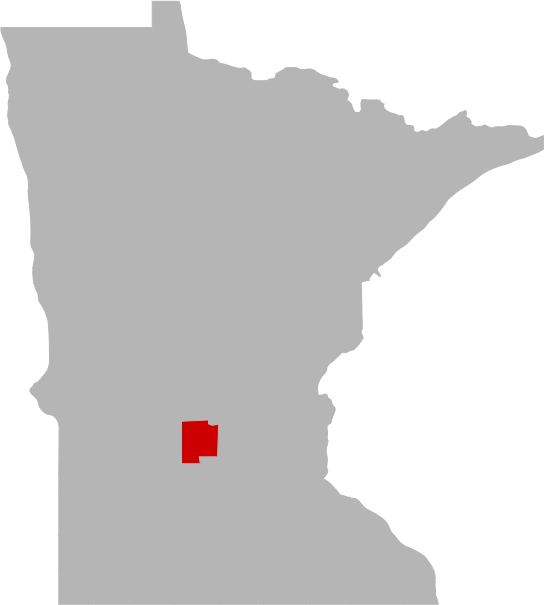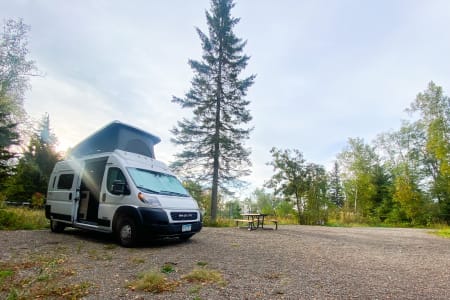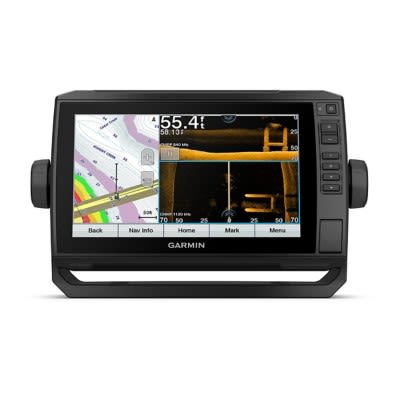Today's Best Fishing Times
Get the best fishing times for Belle Lake with Lake-Link's Fishing Forecast. SEE MORE


Share Your Catch & Win!
Frequently Asked Questions About Belle Lake, MN
- How big is Belle Lake?
- How deep is Belle Lake?
- What kind of fish can you catch in Belle Lake?
- Are there places to stay in the Belle Lake area?
- Are there boat launches on Belle Lake?
- Are there places to eat and drink near Belle Lake?
- What is the average air temp for Belle Lake?
How big is Belle Lake?
How deep is Belle Lake?
What kind of fish can you catch in Belle Lake?
Other fish species in the lake include Fathead Minnow, Golden Shiner, Green Sunfish, Hybrid Sunfish, Iowa Darter, Orangespotted Sunfish, Spottail Shiner, Tadpole Madtom and White Sucker.
Are there places to stay in the Belle Lake area?
More Lodging Options
Are there boat launches on Belle Lake?
Are there places to eat and drink near Belle Lake?
Explore the Belle Lake area in a RV
Are you looking for an adventurous vacation option that won't break the bank? Look no further than renting an RV! Contrary to popular belief, the process is much simpler than you might imagine. With just a few easy steps, you'll soon be experiencing the ultimate freedom and convenience of exploring the open road in your very own recreational vehicle. And the best part? RV travel can save you up to 60% compared to other types of vacations! With the money you'll save, you'll be able to travel even more and create unforgettable memories along the way. So why wait? Start planning your next adventure today with an RV rental. Learn more about renting a RV.




2020 Lightning Aluminum Enclosed 5-place Snowmobile Trailer
Lakeville, MN
What aquatic invasive species are found in Belle Lake?
Join us in the fight to prevent the spread of invasive species These sneaky creatures can hitch a ride on boats, clinging onto propellers, anchor lines, and trailers. They can even survive in hidden places like bilge water and ballast tanks, or disguise themselves in dirt and sand that sticks to nets, buckets, anchors, and waders. But don't worry, we have the power to stop them in their tracks with just a few simple steps. So let's do our part and protect our waters from these unwanted invaders.
History & Status of the Fishery
A standard survey was conducted at Belle in 2016 to monitor the lake's fish population. This was the sixth assessment (2008-2016) in the Sentinel Lake, Long Term Monitoring project (formerly known as Sustaining Lakes in a Changing Environment), of which Belle was a tier two lake. A total of 15 species, plus Hybrid Sunfish, were sampled in the gill nets, trap nets, and by spring night-time electrofishing. The lake was well mixed, on 6/06/16, with the dissolved oxygen concentration being 8.7 mg/l just off the bottom (24.1 feet of water), allowing fish to use all depths of the lake. Water clarity was only fair, with a secchi disk reading of 5.5 feet, due to an algae bloom. A small fishing pier was available for anglers at the Piepenberg County Park on the east side of the lake.
Gill nets sampled moderate numbers of Northern Pike (62) for a catch rate of 5.2/net, which was within the normal range for this type of lake or what we would expect for lakes similar to Belle. The 2013 catch rate was similar at 7.2/net. Catch rates from 1957 to 2016 (n=21) were generally low, ranging from 0.0 to 9.1/net with an average of 2.5. Historically, recruitment could be classified as low (<5/net) at Belle, but since 2011 (n=3 assessments) the lake averaged 5.8/net (double the historical average). A shift seems to have occurred between the 1957 to 2001 time period and the 2003 to 2016 span. The average gill net catch rate from the latter time period (n=13) was 1.4/net while the average from recent years (n=8) was 4.3/net (three times higher). In 2016, gill netted Northern Pike were 19.7 to 32.4 inches long with an average of 24.4. Approximately 97% of the gill net catch was 21 inches or longer, while 10% were 28 inches or longer, indicating a quality size structure. Northern Pike were age-2 to age-6, with four year classes being present. Age-2 and age-3 fish made up 61% and 32% of the gill net aged fish, respectively. Growth was fast.
Trap nets sampled moderate numbers (231) of Black Crappie for a catch rate of 19.3/net, which was within the normal range for this type of lake. The 2013 catch rate was 30.4/net. Catch rates from 1957 to 2016 (n=19) were highly variable, ranging from 0.0 to 85.2/net with an average of 21.4. Trap netted Black Crappie were 3.5 to 14.4 inches long with an average of 4.7. Only 1 trap netted Black Crappie was over 8 inches in length. Gill nets sampled low numbers of Black Crappie (45) for a catch rate of 3.8/net, which was within the normal range for this type of lake. The 2013 gill net catch rate was 14.9/net. Catch rates from 1957 to 2016 (n=21) were variable, ranging from 0.0 to 20.3/net with an average of 7.3. Gill netted black crappie were 4.1 to 12.6 inches long with an average of 7.0. Only 5 of the gill netted fish were 8 inches or longer, indicating a poor size structure. Black crappie were age-1 to age-6, with five year classes present. Age-1 and age-2 fish made up 76% and 23%, respectively of the trap net aged fish. Strong year classes were produced in 2014 and 2015, but several weak or missing year classes (2012-2013) indicated sporadic recruitment. Growth was fast. Anglers should expect better crappie fishing within a year or two.
Gill nets sampled low numbers of Walleye (39) for a catch rate of 3.3/net, which was within the normal range for this type of lake. This was the lowest catch rate, going back 26 years, since 1990 (1.8/net). The 2013 catch rate was 5.6/net. Catch rates from 1957 to 2016 (n=21), under various stocking regimes, were highly variable ranging from 1.8 to 29.8/net with an average of 10.1. In 2016, gill netted Walleye were 7.3 to 25.3 inches long with an average of 14.3. Approximately 49% of the gill net catch was 16 inches or longer, indicating a quality size structure. Walleye were estimated to be age-1 to age-15 with ten year classes present. Skip years (non-stocked) in the stocking regime accounted for 13% of gill net aged walleye, indicating that natural reproduction was occurring. The contribution from natural reproduction during fry stocked years was unknown. Growth was fast. The current stocking regime (383,000 fry every other year) was initiated in 1993. Catch rates from 1995 to 2016 (n=11) ranged from 3.3/net (2016) to 29.8/net (1995) with an average of 10.0. Increasing Northern Pike catch rates (4.3/net during the 2003 to 2016 time period versus 1.4/net for the 1957 to 2001 period) may be having negative impacts on Walleye recruitment at Belle Lake.
Trap nets sampled low numbers of Bluegill (99) for a catch rate of 8.3/net which was within the normal range for this type of lake. The 2013 catch rate was very similar at 7.0/net. Catch rates from 1957 to 2016 (n=19) were mostly low, ranging from 0.0 to 18.0/net, with an average of 5.9. In 2016, trap netted Bluegill were 2.5 to 8.5 inches long with an average of 5.2. Approximately 4% of the trap net catch was 7 inches or longer, indicating a poor size structure with few fish at sizes preferred by anglers. Although no plant surveys were done in 2016, anecdotal observations indicated that submergent vegetation was sparse during netting week. Bluegill were likely being limited by the lake's marginal submergent plant habitat, which is typical for Belle.
Spring night-time electrofishing sampled 29 Largemouth Bass for a catch rate of 17.4/hr., which was the highest on record for Belle Lake. The 2013 catch rate was 7.2/hr. Catch rates (n=10) from 1993 to 2016 were mostly low, ranging from 0.6 to 17.4/hr. with an average of 5.4. Largemouth Bass were 5.3 to 13.4 inches long with an average of 9.6. Approximately 17% of the electrofishing catch was 12 inches or longer, indicating a poor size structure. Largemouth Bass (all gears) were age-1 to age-4 with four year classes present. Growth was fast. Data indicated inconsistent recruitment for this species. Largemouth Bass were likely not doing well for the same reasons that the Bluegill were not flourishing (marginal submergent vegetation habitat). Observations during Belle's fall electrofishing assessment indicated that longer (up to 15 inches in length) Largemouth Bass were present in the lake.
Gill nets sampled high numbers of Yellow Perch (290) for a catch rate of 24.2/net, which was within the normal range for this type of lake. The 2013 catch rates was 16.0/net. Catch rates from 1957 to 2016 (n=21) were highly variable ranging from 0.5 to 59.8/net with an average of 15.5. Yellow Perch were 4.9 to 9.5 inches long with an average of 6.0. A total of 4 fish were 9 inches or longer, indicating that a few keepers were available for anglers. Yellow Perch were age-1 to age-3 with three year classes present. Approximately 87% of the gill netted fish were from the 2014 year class. The 2015 year class could also be strong, but they may not have fully recruited to the gear at sampling time. Yellow Perch were an important forage species at Belle Lake.
Trap nets sampled low numbers of Common Carp (20) for a catch rate of 1.7/net, which was within the normal range for this type of lake. Historic catch rates (n=19) from 1957 to 2016 were mostly low, ranging from 0.1 to 5.2/net with an average of 1.8. Trap netted Common Carp were 6.1 to 10.8 inches long with an average of 7.8. Gill nets sampled low numbers of Common Carp (11) for a catch rate of 0.9/net, which was within the normal range for this type of lake. Historic gill net catch rates (n=21) were mostly low, ranging from 0.0 to 14.2/net with an average of 3.3. Gill netted Common Carp were 7.7 to 29.3 with an average of 15.7. Common Carp would be difficult to control, at Belle Lake, due to a highly connected and large watershed.
Gill nets sampled low numbers of Black Bullhead (9) for a catch rate of 0.8/net, which was below the normal range for this type of lake. The 2013 catch rate was also low (0.3/net). Historic catch rates from 1957 to 2016 (n=21) were highly variable, ranging from 0.0 to 217.2/net with an average of 42.4. Gill netted Black Bullhead were 4.9 to 9.3 inches long with an average of 7.9. Trap nets sampled low numbers of Black Bullhead (58) for a catch rate of 4.8/net which was within the normal range for this type of lake. Trap netted Black Bullhead were 4.6 to 13.5 inches long with an average of 7.3. Only 6 fish were 9 inches or longer, indicating a poor size structure. In recent years, some area lakes have experienced declines in Black Bullhead abundance and a similar shift seems to have occurred at Belle (2006 to 2016 time period). Since 2006, the average gill net catch rate (1.4/net) was much lower (45 times) than the average from the 1957 to 2003 time period (62.9/net). The exact reason for the drop was unknown, but a decreased winterkill frequency in connected Cedar Lake, and subsequent bullhead migrations, could partially explain the decline. The last big Black Bullhead catch rate occurred at Belle in 2003 (79.1/gill net), two years after the severe 2001 winterkill in Cedar Lake. Black Bullhead often spawn a large year class immediately after a severe winterkill, due to the large decrease in the lake's predator species (Northern Pike, Black Crappie, Yellow Perch, Walleye, etc.).
Additional species sampled in the standard gear included; Bigmouth Buffalo, Bowfin, Brown Bullhead, Green Sunfish, Hybrid Sunfish, Pumpkinseed Sunfish, Tadpole Madtom, and Yellow Bullhead.
What is the average air temp for Belle Lake?
More Nearby Lakes To Explore
There's more lake's to explore around Belle Lake...| DISTANCE | ACRES | MAX DEPTH | |
| Stahl's Lake | 1.7 mi | 141 | 37 ft |
| Cedar Lake | 1.7 mi | 1,860 | 8 ft |
| Lake Erie | 2.1 mi | 190 | 34 ft |
| French Lake | 2.4 mi | 42 | 23 ft |
| Greenleaf Lake | 3.1 mi | 239 | 18 ft |
| Willie Lake | 3.9 mi | 191 | 17 ft |
| Hoff Lake | 4.3 mi | 139 | 8 ft |
| Lake Hook | 4.3 mi | 330 | 18 ft |
| Lake Jennie | 4.8 mi | 1,064 | 15 ft |
| Manuella Lake | 5.5 mi | 290 | 51 ft |















